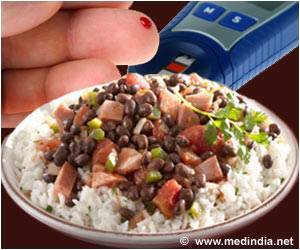The United States announced sweeping new rules forcing pizza parlors and chain restaurants to publish calorie counts on menus in an attempt to combat obesity epidemic.

Similar rules have already been used for years in several US states and cities, such as California and New York.
"Americans eat and drink one third of their calories away from home and people today expect clear information about the products they consume," FDA commissioner Margaret Hamburg said in a statement.
"Making calorie information available on chain restaurant menus and vending machines is an important step for public health that will help consumers make informed choices for themselves and their families."
Under the new rules, restaurants will be required to publish calorie information for all standards prominently on menus and menu boards. Temporary menu items and specials are exempt from the requirements.
The menu labeling rule also includes food facilities at venues such as movie theaters and amusement parks.
Advertisement
The finalization of the new rules was required under the 2010 Patient Protection and Affordable Care Act.
Advertisement
The rules come as America grapples with ever rising rates of obesity.
More than one-third of American adults (34.9% or 78.6 million) are obese, according to recent figures cited by the US Centers for Disease Control and Prevention.
The CDC said the annual medical cost of treating obesity in the United States in 2008 was $147 billion. Medical care for obese people averages $1,429 more per person than individuals of normal weight.
A 2009 study analyzing the effect of calorie labeling on 1,156 adult customers at fast-food restaurants in low-income neighborhoods of New York suggested that while the policy raised awareness of calorie content, it did not necessarily affect the number of calories purchased.
Public health campaigners welcomed the introduction of the new rules Tuesday, saying they hoped small chain restaurants not covered by the new law would adopt the labeling policy.
"Menu labeling is the biggest advance in providing nutrition information to consumers since the law that required Nutrition Facts labels on packaged foods was implemented 20 years ago," said Margo Wootan, the nutrition policy director at the Center for Science in the Public Interest.
"It will soon seem strange that once it was possible to go into a Chick-fil-A or a Denny's and not see calories on menus and menu boards."
"We hope that small chains and independent restaurants provide the same information voluntarily."
However the new laws, which will come into effect in a year's time, were unpopular with the National Grocers Association, unhappy that the labeling rules will apply to food counters in supermarkets.
"Grocery stores are not chain restaurants, which is why Congress did not initially include them in the law," a statement from the lobby group said.
"We are disappointed that the FDA's final rules will capture grocery stores, and impose such a large and costly regulatory burden on our members."
Source-AFP













